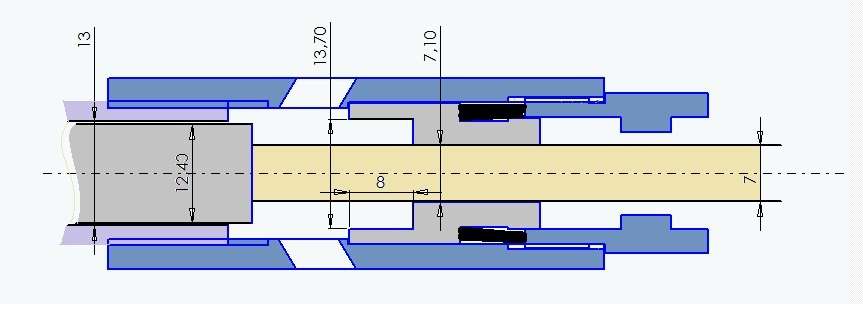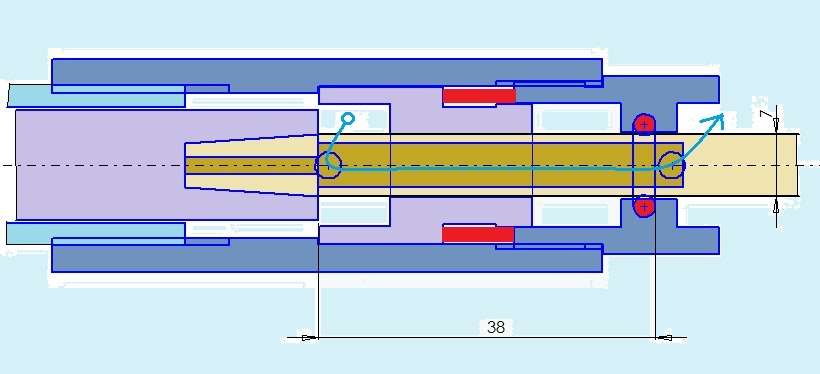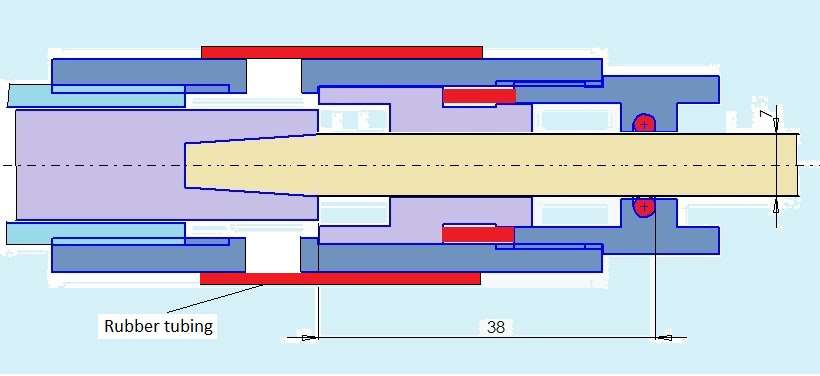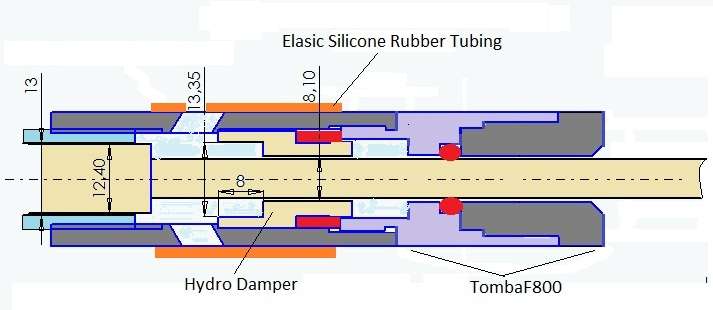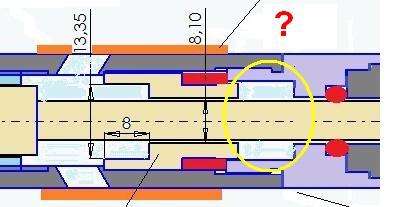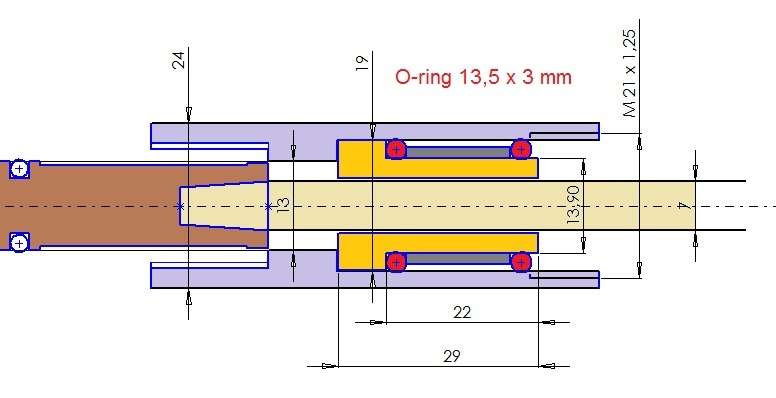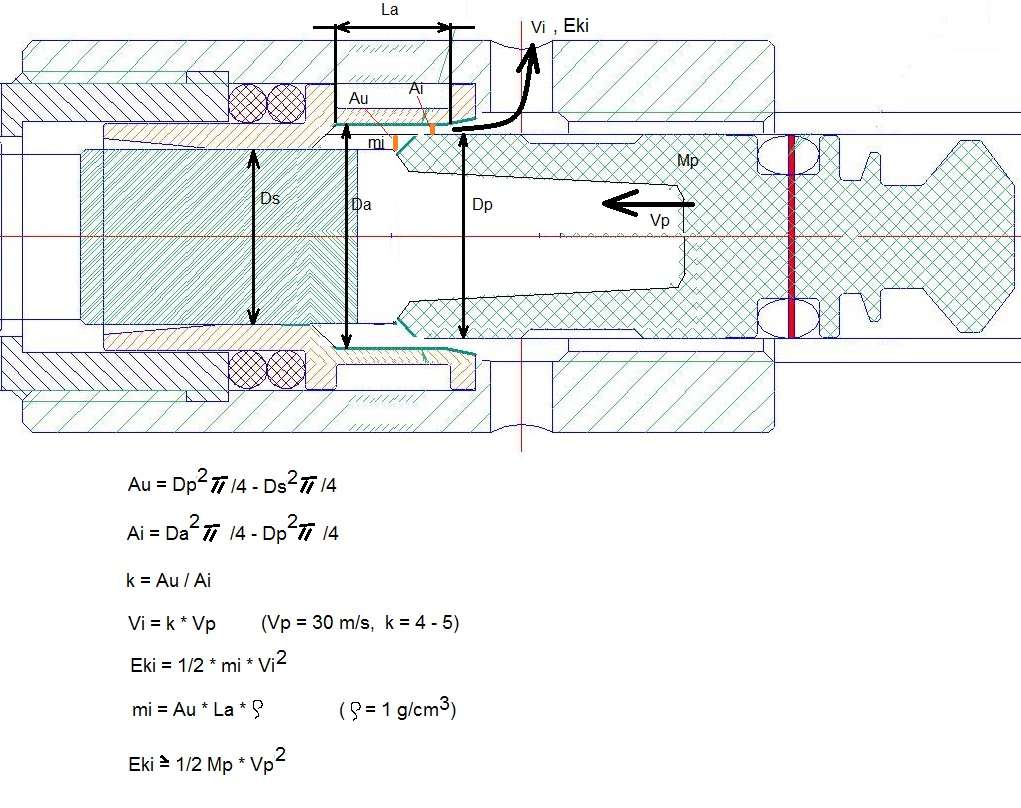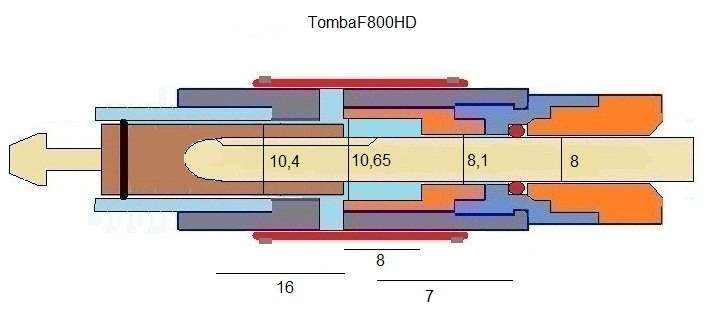The viscosity of the fluid has a bearing on the result, using just the changing cross-sectional areas and mass of the fluid and the velocity is only part of the calculation. That is why shock absorbers use different viscosity oils to change their damping performance and that determines the degree of slowing of the mass flow rate in their pumping action. The fork oil we use in pneumatic guns comes in different grades for that reason. So the calculation of performance is not so straightforward as it was for a rubber sleeve damping unit.
Yes, that's right. Some testing should be necessary. Calculation results give just a boundary, first approximation, just an idea how to go.
Last edited:



